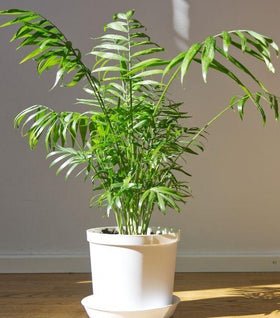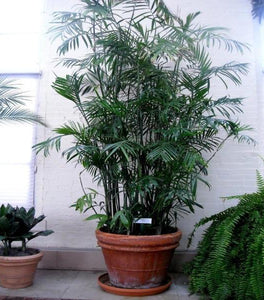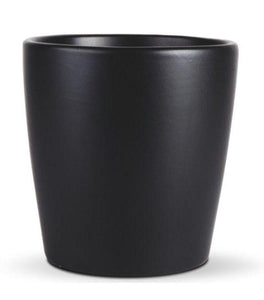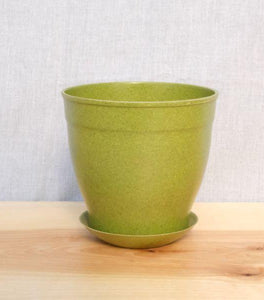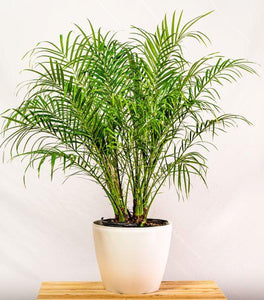Images Depict Mature Plants
Coconut Palm Tree for Sale Online
Even Though Coconut Palm Trees (Cocos nucifera) can grow up to 60 feet tall, depending on the space, they can be kept in a container for the first few years of their life. It does great inside the home.
Coconut Palm plant is classified by a large cylindrical trunk that does not branch, with a nice little coconut at the base of the plant. Dark green, glossy, and smooth foliage is extremely symmetrical and geometric, making this a beautiful plant to view from above. In containers, these plants typically will not flower. Definitely a neat addition to any indoor room and will give a nice tropical feel.
Because of their robust green foliage, Coconut Palm plants will match virtually any space and color indoors or outdoors. Coconut Palm is a slow-growing, low-maintenance plant. The most common problem that people encounter is giving them too much water; these plants are prone to rotting if the soil does not drain properly from the container or location they're planted in. Coconut Palms are very low-maintenance plants.
| Hardiness Zone: | 9-11 |
|---|---|
| Mature Height: | 30 to 36 Inches |
| Mature Width: | 30 to 36 Inches |
| Classification: | Green foliage |
| Sunlight: | Fluorescent light to full sun (if outdoors) |
| Habit: | Palm tree habit, unlikely to flower in containers |
| Flower Color: | Brown inflorescence |
| Foliage: | Dark green, glossy |
| Soil Condition: | Likes to stay dry |
| Water Requirements: | Likes to dry out between watering |
| Uses: | Hardy plant to keep indoors or outside |
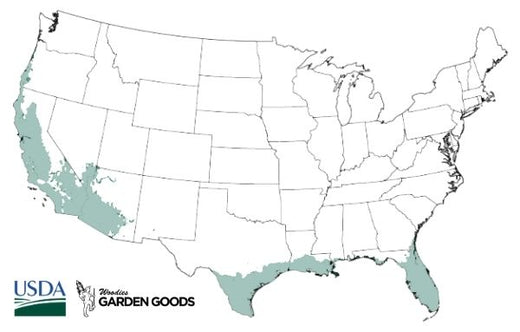
How to Care for Coconut Palm Tree
Be sure to read our planting instructions to ensure a healthy and happy plant for years to come!

What Is The Best Light For Coconut Palm Trees?
Coconut Palm Trees will tolerate fluorescent light but prefer bright light from a windowsill for several hours. Eastern or western facing windows generally provide enough light for Coconut Palm trees to be happy. Outdoors, they like to be in part to full sun.
How Do I Water Coconut Palm Trees?
Coconut Palm Trees needs to dry out between watering, and they are prone to root rot and death. If you're unsure about whether or not to water, do not water. The soil should be almost parched before watering again in containers. Outdoors, Coconut Palms should be located in an area that drains very well, as they will not tolerate sitting in water for extended periods. Sandy soil or mixing sand with the potting mix to transplant is generally a good idea to encourage drainage.
How Do I Fertilize Coconut Palm Trees?
Any fertilizer offers nutrients that help plants with the transition to a new environment. We offer a one year warranty on our plants when you purchase Bio-tone at checkout and use it per label instructions. All of these fertilizers may be used when planting Coconut Palms indoors or outdoors. Keep in mind that Coconut Palm Trees tend to grow very slowly, even if they are fed regularly.

What Is The Best Soil For Coconut Palm Trees?
Coconut Palm trees need a very well draining soil and prefer to have dry conditions. Adding sand to potting mix or mixing sand with existing soil outdoors helps with drainage. Avoiding an area with clay soil if planting outdoors. Combining the sand and avoiding clay are both beneficial steps to preventing root rot.






